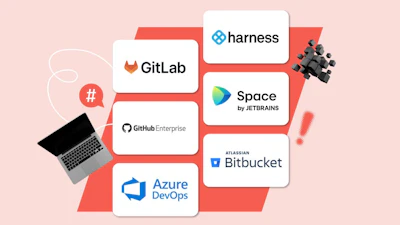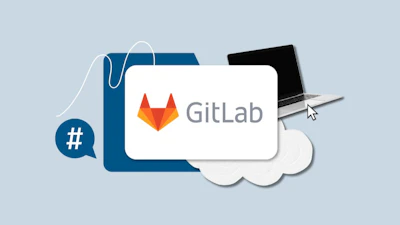In today's digital environment, where cyber threats evolve at a dizzying pace, application security is no longer an option but a critical necessity for businesses. Every line of code deployed without a thorough review represents a potential gateway for vulnerabilities that can compromise sensitive data, disrupt operations, and damage corporate reputation.
That is why application security testing tools (AST) have become fundamental elements within the software development lifecycle. The main objective of these tools is to identify vulnerabilities and protect data and systems. Adopting this type of technology not only meets a technical requirement but also represents a strategic decision aligned with business continuity and digital resilience.
If right now you don’t know which software you need for your new project or company, don’t worry, throughout this article we will review the best options available within application security testing tools (AST).
Which option to choose?
Why your company should hire an application security testing tool
Hiring an application security testing solution is not just an investment in technology, but a strategic measure to protect the digital heart of your company.
These solutions allow early, automated, and systematic detection and remediation of security flaws, which not only improves software quality but also reduces the cost associated with fixing errors at advanced stages.
The AST tools provide coverage for different security layers, from static code analysis (SAST) to dynamic testing (DAST) and software composition analysis (SCA), enabling development and security teams to work collaboratively in an increasingly necessary DevSecOps environment.
Additionally, AST tools not only identify security issues but allow security to be integrated from the early stages of development. This translates into less work, fewer interruptions, and greater agility when deploying secure products to the market.
In business environments where development speed is key to competitiveness, having such software allows teams not to have to choose between speed and product integrity.
Clients, investors, and partners increasingly value companies taking cybersecurity seriously, especially in regulated sectors such as financial, healthcare, or technology. Having a secure development environment not only prevents costly incidents but becomes a competitive advantage and a strong commercial argument. Application security protects the customer relationship and ensures uninterrupted business operations, strengthening trust and business continuity.
What characteristics should a good application security testing tool have
Given the wide range of application security testing solutions available in the market, it is essential to know what criteria to consider when evaluating and selecting the most suitable tool for your company.
Not all solutions are the same, and a wrong choice can result in incomplete analyses, constant false positives, or poor integration with development workflows. Therefore, knowing the key characteristics that an AST tool must meet is essential to ensure an effective implementation aligned with the security and productivity goals of the business.
It is also important to consider the continuous maintenance of security throughout the software development lifecycle, including phases such as design, development, deployment, and updating, to proactively manage vulnerabilities.
A good application security testing tool should have:
- Complete analysis coverage: Support for multiple types of tests such as SAST (static analysis), DAST (dynamic analysis), IAST (interactive analysis), and SCA (software composition analysis).
- Easy integration with the development cycle (CI/CD): Ability to integrate with DevOps tools like Jenkins, GitLab, Azure DevOps, etc., allowing automation of tests at all development stages.
- High accuracy with a low number of false positives: A good analysis engine must provide reliable results to avoid overwhelming the team with irrelevant alerts.
- Frequent updates and a robust vulnerability database: It should have an updated system that recognizes both known and emerging threats.
- Intuitive interface and ease of use: User experience is key to facilitating adoption by developers and security teams.
- Customization and scalability capabilities: It should adapt to the needs of small, medium, or large companies and grow along with the organization.
- Quality support and documentation: Access to efficient technical support, clear guides, and an active community can make a big difference during implementation and ongoing use.
- Regulatory compliance and reporting: It should help align developments with standards such as OWASP Top 10, ISO/IEC 27001, PCI-DSS, among others, and facilitate report generation for audits or presentations to stakeholders.
Comparative table with the best application security testing tools
| Tool | Strengths | Advantages | Disadvantages | Starting Price | Ideal Use |
|---|---|---|---|---|---|
| Veracode | Comprehensive cloud-based platform | Good balance between SAST, DAST, and SCA; excellent regulatory support | Initial learning curve; dependent on cloud connectivity | From approximately $12,000/year | Large companies requiring an all-in-one security testing and compliance evaluation service |
| Checkmarx One | Advanced SAST with a developer focus | Deep integration in IDEs; insecure code detection from early stages | High price; may require adjustments for complex environments | From approximately $20,000/year | DevSecOps teams in intensive development environments |
| SonarQube (Enterprise Edition) | Excellent for static source code analysis | Clear interface; easy integration in CI/CD | Does not include DAST or SCA; limited against external threats | From approximately $150/month | Teams seeking code quality and early vulnerability detection |
| Burp Suite Professional | Powerful DAST tool for pentesters | Very effective for manual dynamic analysis; highly customizable | Technical learning curve; not automated by default | From $449/year | Security teams or testers performing manual audits |
| Snyk | SCA focused on open source and containers | Fast, easy to integrate; excellent for identifying vulnerabilities in dependencies | Limited in deep analysis of own code | Free plan (limited); from $3,000/year for teams | Startups, developers, and companies with a DevOps focus |
| Fortify (Micro Focus) | Very comprehensive enterprise solution | Solid SAST/DAST analysis; ideal for regulated sectors; offers security evaluations and specialized service for large enterprise networks | Implementation complexity; outdated interface | From approximately $25,000/year | Large corporations with high compliance requirements |
| Acunetix | Fast and automated DAST tool | Its scanner allows analyzing multiple websites and detecting vulnerabilities on different operating systems; ideal for web application testing; good OWASP vulnerability coverage | Does not cover SAST or source code analysis | From $4,500/year | SMBs or mid-sized companies needing effective web scanning |

1. Veracode
Veracode is a cloud-based application security platform that offers static analysis (SAST), dynamic analysis (DAST), and software composition analysis (SCA).
It stands out for its seamless integration with development tools and its focus on regulatory compliance. Additionally, it provides continuous monitoring capabilities for real-time detection of threats and vulnerabilities, helping to maintain constant application protection.
Regarding drawbacks, false positives can become an issue for security teams, as they may affect accuracy and efficiency in detection and remediation processes.
We recommend its use for large enterprises that require a comprehensive application security solution with strict regulatory compliance and support for multiple languages and environments.
Main Features of Veracode
- Static and dynamic code analysis.
- Software composition analysis (SCA).
- Integration with CI/CD tools.
- Detailed reports and security policy tracking.
- Online training for developers.
Pros and Cons of Veracode
|
Pros |
Cons |
|
Extensive security analysis coverage. |
Non-intuitive user interface. |
|
Easy integration with development pipelines. |
Slow scans on large projects. |
|
Support for compliance with standards such as OWASP, ISO, PCI-DSS. |
High number of false positives. |
|
Scalability and ease of adoption. |
Confusing licensing model. |
Veracode Plans and Pricing
The price of Veracode is approximately €11,000 per year, depending on the company's size and needs. Its plans include:
- Basic plan: Includes static analysis (SAST) and software composition analysis (SCA).
- Advanced plans: May include dynamic analysis (DAST), integration with development tools, developer training, and premium support.
2. Checkmarx One
Checkmarx One is a unified application security platform that combines SAST, DAST, IAST, and SCA. It is designed to integrate into the development lifecycle and provide a comprehensive view of software security.
Additionally, Checkmarx One helps protect sensitive information throughout the development cycle, ensuring that sensitive data such as passwords and API keys are safeguarded against unauthorized access.
We recommend this option for medium and large enterprises seeking a comprehensive application security solution with deep integration into their development processes and regulatory compliance.
Main features of Checkmarx One
- Static and dynamic code analysis.
- Interactive and software composition analysis.
- Integration with development and CI/CD tools.
- Customizable reports and security policy management.
- Support for multiple programming languages.
Pros and cons of Checkmarx One
|
Pros |
Cons |
|
Comprehensive coverage of security analysis. |
High price and complex licensing model. |
|
Deep integration in development environments. |
Needs improvements in DAST and support for more languages. |
|
Detailed and customizable reports. |
Steep learning curve. |
|
Responsive technical support. |
Checkmarx One plans and pricing
The price range of Checkmarx One ranges from ~27,600 € to over 82,800 €, depending on selected modules and additional services. Among the optional add-ons are:
- API Security: ~250 € per license/year.
- IaC (KICS): ~220 € per license/year.
- AI Protection: ~110 € per license/year.
- Codebashing (training): ~320 € per license/year.
3. SonarQube (Enterprise Edition)
SonarQube is a static code analysis tool that helps detect bugs, vulnerabilities, and code smells. The Enterprise edition offers advanced features such as branch and pull request analysis, and easily integrates into CI/CD pipelines.
Additionally, SonarQube facilitates the application of fundamental security and quality principles, such as confidentiality, integrity, and availability, ensuring that software development complies with best practices from the start.
Its use is intended for companies seeking to improve code quality and detect vulnerabilities from the early stages of development, especially those with multiple teams and projects.
Main Features of SonarQube (Enterprise Edition)
- Static source code analysis.
- Integration with CI/CD tools.
- Branch and pull request analysis.
- Support for multiple programming languages.
- Detailed code quality reports.
Pros and Cons of SonarQube (Enterprise Edition)
|
Pros |
Cons |
|
Clear and easy-to-use interface. |
Does not include dynamic or software composition analysis. |
|
Easy integration in development environments. |
Limited against external threats. |
|
Support for a wide range of languages. |
Requires additional configuration for complex environments. |
|
Continuous improvement of code quality. |
Plans and Pricing of SonarQube (Enterprise Edition)
SonarQube offers from 0 up to €125,000 per year, depending on the plan you choose and the size of your company. The available plans are as follows:
- Community Edition: Free. Includes support for popular languages and basic analysis.
- Developer Edition: ~€150 per year. Adds integration with IDEs and branch analysis.
- Enterprise Edition: ~€19,300 per year. Includes advanced analysis, support for multiple projects, and enterprise features.
- Data Center Edition: ~€125,000 per year. Designed for organizations with high availability and scalability needs.
4. Burp Suite Professional
Burp Suite Professional is a dynamic web application analysis tool primarily used by testers and security teams. Among its key features, Burp Suite allows injection testing, including SQL injection, analysis of cookie and session management, as well as session security assessments. Additionally, it is especially useful in penetration testing to identify and exploit security flaws.
We recommend Burp Suite Professional to security teams and testers who perform manual web application audits and need a flexible and powerful tool to identify vulnerabilities.
Main Features
5. Snyk
Snyk is a security platform focused on developers that offers software composition analysis (SCA), static application security testing (SAST) and container analysis. It easily integrates into development and CI/CD environments.
Additionally, Snyk enables identification and management of vulnerabilities in third-party components and open source code, helping to assess risks associated with external dependencies within the software supply chain.
Its ideal use case is startups and development teams seeking to integrate security into their workflow from early stages, especially those that widely use open source code and containers.
Main features of Snyk
- Dependency and vulnerability analysis in open source code.
- Static analysis of source code.
- Container analysis and infrastructure as code configuration.
- Integration with repositories and CI/CD tools.
- Vulnerability reporting and tracking.
Pros and cons of Snyk
|
Pros |
Cons |
|
Easy integration into development workflows. |
Limited in-depth analysis of proprietary code. |
|
Intuitive and easy-to-use interface. |
May generate false positives in certain configurations. |
|
Wide support for languages and environments. |
High price for enterprise plans. |
|
Free plan available for small teams. |
Snyk plans and pricing
Snyk offers both a free plan and paid plans, with prices starting at approximately €90 per developer per month. Below are all their plans:
- Free: Free. Includes limited tests for open source code, containers, IaC, and Snyk Code.
- Team: From ~€90 per developer/month. Includes unlimited tests and additional features like license compliance and integration with Jira.
- Enterprise: Custom pricing. Offers advanced features such as rich API, detailed reports, security policy management, and support for local container registries.
6. Fortify (Micro Focus)
Fortify is an application security solution that offers static and dynamic analysis, as well as software composition analysis. It is designed to integrate into enterprise environments and comply with security regulations.
Fortify protects complex enterprise systems against threats and vulnerabilities, ensuring the integrity of critical technological infrastructures. Therefore, we recommend Fortify for large corporations with high compliance requirements and the need for a comprehensive application security solution.
Main Features of Fortify
- Static and dynamic code analysis.
- Software composition analysis.
- Integration with development and CI/CD tools.
- Detailed reports and security policy tracking.
- Support for multiple languages and platforms.
Pros and Cons of Fortify
|
Pros |
Cons |
|
Comprehensive security analysis coverage. |
Complexity of implementation and configuration. |
|
Integration with enterprise environments. |
Less modern user interface. |
|
Support for regulatory compliance. |
High price for small and medium-sized businesses. |
|
Scalability and customization. |
Fortify Plans and Pricing
Fortify pricing is approximately €23,000 per year, varying according to company size and needs. These are the available plans:
- Fortify Static Code Analyzer (SCA): Includes static code analysis.
- Fortify WebInspect: Includes dynamic analysis of web applications.
- Fortify Software Security Center: Centralized platform to manage application security.
7. Acunetix
Acunetix is a dynamic web application scanning tool that detects a wide range of vulnerabilities. It allows you to analyze the security of any website and its pages against attackers. It offers automated scans and integrates with development and issue tracking tools.
It is designed for small and medium-sized businesses that need an effective and automated solution to scan and secure their web applications.
Main features of Acunetix
- Automatic scanning of web applications.
- Detection of more than 7,000 vulnerabilities.
- Integration with CI/CD and issue tracking tools.
- Detailed reports and remediation recommendations.
- Support for multiple web technologies.
Pros and cons of Acunetix
|
Pros |
Cons |
|
Fast and accurate scans. |
Does not include static or software composition analysis. |
|
Intuitive and easy-to-use interface. |
Limited to web applications. |
|
Integration with popular development tools. |
High price for small businesses. |
|
Responsive technical support. |
Acunetix plans and pricing
Acunetix prices are approximately €4,200 per year, depending on features and support required. These are the available plans:
- Standard: Designed for small businesses.
- Premium: Includes additional features such as integration with development tools and support for multiple users.
- Acunetix 360: Enterprise solution with advanced functionalities and support for large organizations.

Which AST Applications Have We Discarded? 3 Do Not Make the Cut
Although the market for application security testing (AST) tools is broad and diverse, not all options meet the quality, scalability, and effectiveness standards demanded by today's business environments.
Furthermore, the choice of the right tool also depends on the type of tester, as each tester may require specific features depending on whether they perform DAST, SAST, or other techniques to identify vulnerabilities in systems and web applications.
In this article, we have prioritized those solutions that offer a high degree of accuracy, strong enterprise support, constant updates, and seamless integration with modern DevSecOps workflows. Therefore, some popular tools have been excluded from the main analysis.
OWASP ZAP (Zed Attack Proxy)
While it is a free and open-source solution very useful for learning environments or small tests, it lacks the robustness, scalability, and advanced features necessary in enterprise contexts.
Wapiti
This is another open source tool that, although it fulfills basic scanning functions, falls short compared to commercial solutions that offer advanced automation, professional support, and constant updates.
AppScan Standard (by IBM)
After analyzing this option, we have decided to discontinue AppScan Standard in favor of more modern alternatives such as Checkmarx or Veracode. Although it was a reference in the sector for many years, its evolution has been slower compared to other platforms, both in terms of user experience and integration capability with agile development environments.
These tools remain valid in certain contexts, but in a strict high-level comparison, they do not meet the standards currently required by companies with advanced security needs.
Can AI replace application security testing tools?
Artificial intelligence has revolutionized the field of cybersecurity, including application security testing (AST) tools, by providing capabilities such as pattern detection, reduction of false positives, and automation of repetitive tasks.
Thanks to the use of machine learning algorithms, these tools can identify vulnerabilities more quickly and accurately, anticipate certain emerging risks, and facilitate decision-making for development and security teams.
In this sense, AI acts as a catalyst that enhances the effectiveness and efficiency of existing security solutions.
However, AI cannot completely replace traditional application security tools or human judgment. AST tools are specifically designed to comply with regulations, perform in-depth static and dynamic analysis, and integrate into complex development environments.
AI cannot replace these processes or evaluate the specific context of each application with the same accuracy and responsibility as a well-configured solution maintained by professionals. Furthermore, expert supervision remains essential to interpret results and make informed decisions, as their experience maximizes the effectiveness of the tools and ensures proper analysis in complex environments.
Therefore, rather than an alternative, artificial intelligence should be understood as a complement that strengthens the value of AST tools, but not as a comprehensive substitute.
Which AST tool is best for each type of company?
As a summary, we offer you a selection of protection tools along with the type of company that can make the best use of them.
For example, a tech startup that needs to integrate security into its DevOps flow may choose Snyk to detect vulnerabilities in real time, while a large corporation with heavy regulatory requirements could opt for Veracode to comply with compliance standards.
These are our recommendations according to your type of company:
- Large corporations with heavy regulatory requirements: Veracode, Fortify
- DevOps teams and tech startups: Snyk, SonarQube
- Companies focused on web security: Burp Suite, Acunetix
- Organizations seeking an educational or training approach: Checkmarx with Codebashing
- Companies that prioritize static analysis with customization: Checkmarx One, SonarQube Enterprise
Which option to choose?
The Best Application Security Testing Tools You Can Hire
Throughout this article we have thoroughly analyzed what application security testing (AST) tools are, why they are essential for any company that develops software, and what characteristics they must have to be truly effective.
We have also compared the best options on the market, highlighting their strengths, features, updated prices, and ideal use cases. The conclusion is clear: there is no single perfect solution, but there are tools that fit better depending on the size, sector, and needs of each company.
Ultimately, the choice of the ideal tool depends on each company's particular context. Factors such as the size of the development team, the type of applications being built, the level of cybersecurity maturity, and the available budget are decisive.
Even within the same organization, it can be useful to combine various tools that complement each other to cover different aspects of the software lifecycle.
That is why the best recommendation is to start with a realistic evaluation of your needs and resources, and from there conduct pilot tests or demos with the most suitable tools.
Additionally, it is essential to stay attentive to cybersecurity news and trends, as being informed about the latest developments and relevant events allows adapting the application protection strategy against new threats and vulnerabilities.
Investing in security from development not only protects your users and clients, it also improves your brand’s reputation and reduces costs associated with critical vulnerabilities. Choosing well today is anticipating the risks of tomorrow.




